Saks Fifth Avenue 2008 Annual Report Download - page 67
Download and view the complete annual report
Please find page 67 of the 2008 Saks Fifth Avenue annual report below. You can navigate through the pages in the report by either clicking on the pages listed below, or by using the keyword search tool below to find specific information within the annual report.-
 1
1 -
 2
2 -
 3
3 -
 4
4 -
 5
5 -
 6
6 -
 7
7 -
 8
8 -
 9
9 -
 10
10 -
 11
11 -
 12
12 -
 13
13 -
 14
14 -
 15
15 -
 16
16 -
 17
17 -
 18
18 -
 19
19 -
 20
20 -
 21
21 -
 22
22 -
 23
23 -
 24
24 -
 25
25 -
 26
26 -
 27
27 -
 28
28 -
 29
29 -
 30
30 -
 31
31 -
 32
32 -
 33
33 -
 34
34 -
 35
35 -
 36
36 -
 37
37 -
 38
38 -
 39
39 -
 40
40 -
 41
41 -
 42
42 -
 43
43 -
 44
44 -
 45
45 -
 46
46 -
 47
47 -
 48
48 -
 49
49 -
 50
50 -
 51
51 -
 52
52 -
 53
53 -
 54
54 -
 55
55 -
 56
56 -
 57
57 -
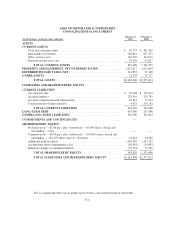 58
58 -
 59
59 -
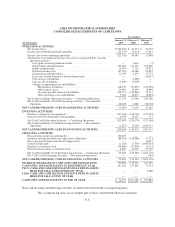 60
60 -
 61
61 -
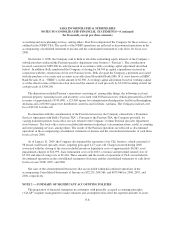 62
62 -
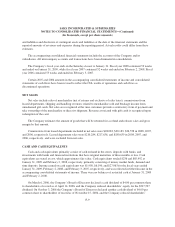 63
63 -
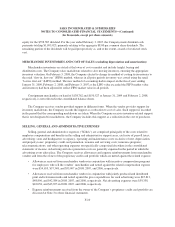 64
64 -
 65
65 -
 66
66 -
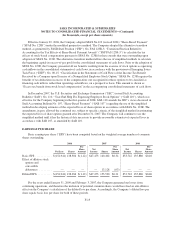 67
67 -
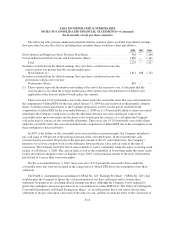 68
68 -
 69
69 -
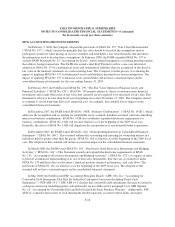 70
70 -
 71
71 -
 72
72 -
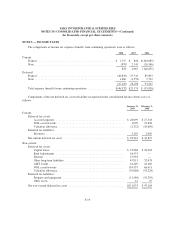 73
73 -
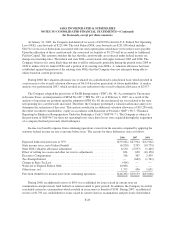 74
74 -
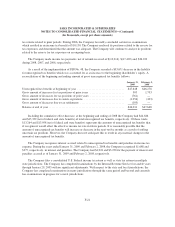 75
75 -
 76
76 -
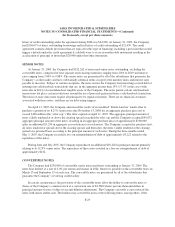 77
77 -
 78
78 -
 79
79 -
 80
80 -
 81
81 -
 82
82 -
 83
83 -
 84
84 -
 85
85 -
 86
86 -
 87
87 -
 88
88 -
 89
89 -
 90
90 -
 91
91 -
 92
92 -
 93
93 -
 94
94 -
 95
95 -
 96
96 -
 97
97 -
 98
98 -
 99
99 -
 100
100 -
 101
101 -
 102
102 -
 103
103 -
 104
104 -
 105
105 -
 106
106 -
 107
107 -
 108
108 -
 109
109 -
 110
110 -
 111
111 -
 112
112 -
 113
113 -
 114
114 -
 115
115 -
 116
116 -
 117
117 -
 118
118 -
 119
119 -
 120
120 -
 121
121 -
 122
122 -
 123
123 -
 124
124 -
 125
125 -
 126
126 -
 127
127 -
 128
128 -
 129
129 -
 130
130 -
 131
131 -
 132
132 -
 133
133 -
 134
134 -
 135
135 -
 136
136 -
 137
137 -
 138
138 -
 139
139 -
 140
140 -
 141
141 -
 142
142 -
 143
143 -
 144
144 -
 145
145 -
 146
146 -
 147
147 -
 148
148 -
 149
149 -
 150
150 -
 151
151 -
 152
152 -
 153
153 -
 154
154 -
 155
155 -
 156
156 -
 157
157 -
 158
158 -
 159
159 -
 160
160 -
 161
161 -
 162
162 -
 163
163 -
 164
164 -
 165
165 -
 166
166 -
 167
167 -
 168
168 -
 169
169 -
 170
170 -
 171
171 -
 172
172 -
 173
173 -
 174
174 -
 175
175 -
 176
176 -
 177
177 -
 178
178 -
 179
179 -
 180
180 -
 181
181 -
 182
182 -
 183
183 -
 184
184 -
 185
185 -
 186
186 -
 187
187 -
 188
188 -
 189
189 -
 190
190 -
 191
191 -
 192
192 -
 193
193 -
 194
194 -
 195
195 -
 196
196 -
 197
197 -
 198
198 -
 199
199 -
 200
200 -
 201
201 -
 202
202 -
 203
203 -
 204
204 -
 205
205 -
 206
206 -
 207
207 -
 208
208 -
 209
209 -
 210
210 -
 211
211 -
 212
212 -
 213
213 -
 214
214 -
 215
215 -
 216
216 -
 217
217 -
 218
218 -
 219
219 -
 220
220 -
 221
221 -
 222
222 -
 223
223 -
 224
224 -
 225
225 -
 226
226 -
 227
227 -
 228
228 -
 229
229 -
 230
230 -
 231
231 -
 232
232 -
 233
233 -
 234
234 -
 235
235 -
 236
236 -
 237
237 -
 238
238 -
 239
239 -
 240
240 -
 241
241 -
 242
242 -
 243
243 -
 244
244 -
 245
245 -
 246
246 -
 247
247 -
 248
248 -
 249
249 -
 250
250 -
 251
251 -
 252
252 -
 253
253 -
 254
254 -
 255
255 -
 256
256 -
 257
257 -
 258
258 -
 259
259 -
 260
260 -
 261
261 -
 262
262 -
 263
263 -
 264
264 -
 265
265 -
 266
266 -
 267
267 -
 268
268 -
 269
269 -
 270
270 -
 271
271 -
 272
272 -
 273
273 -
 274
274 -
 275
275 -
 276
276 -
 277
277 -
 278
278 -
 279
279 -
 280
280 -
 281
281 -
 282
282 -
 283
283 -
 284
284 -
 285
285 -
 286
286 -
 287
287 -
 288
288 -
 289
289 -
 290
290 -
 291
291 -
 292
292
 |
 |

SAKS INCORPORATED & SUBSIDIARIES
NOTES TO CONSOLIDATED FINANCIAL STATEMENTS—(Continued)
(In thousands, except per share amounts)
Effective January 29, 2006, the Company adopted SFAS No.123 (revised 2004) “Share-Based Payment”
(“SFAS No. 123R”) under the modified prospective method. The Company adopted the alternative transition
method, as permitted by FASB Staff Position (“FSP”) No. FAS 123R-3, “Transition Election Related to
Accounting for the Tax Effects of Share-Based Payment Awards” (“FSP FAS 123R-3”) to calculate the tax
effects of stock-based compensation pursuant to SFAS No. 123R for these awards that were outstanding upon
adoption of SFAS No. 123R. The alternative transition method allows the use of simplified methods to calculate
the beginning capital-in-excess-of-par pool for the consolidated statements of cash flows. Prior to the adoption of
SFAS No. 123R, the Company presented all tax benefits resulting from the exercise of stock options as operating
cash inflows in the consolidated statements of cash flows, in accordance with the provisions of Emerging Issues
Task Force (“EITF”) No. 00-15, “Classification in the Statements of Cash Flows of the Income Tax Benefit
Received by a Company upon Exercise of a Nonqualified Employee Stock Option.” SFAS No. 123R requires the
benefits of tax deductions in excess of the compensation cost recognized for those options to be classified as
financing cash inflows rather than operating cash inflows, on a prospective basis. This amount is shown as
“Excess tax benefit from stock based compensation” in the accompanying consolidated statements of cash flows.
In December 2007, the U.S. Securities and Exchange Commission (“SEC”) issued Staff Accounting
Bulletin (“SAB”) No. 110, “Year-End Help For Expensing Employee Stock Options” (“SAB 110”), which was
effective for the Company beginning in the first quarter of 2008. SAB 110 amends the SEC’s views discussed in
Staff Accounting Bulletin No. 107, “Share-Based Payment” (“SAB 107”) regarding the use of the simplified
method in developing estimates of the expected lives of share options in accordance with SFAS No. 123R. The
amendment, in part, allowed the continued use, subject to specific criteria, of the simplified method in estimating
the expected lives of share options granted after December 31, 2007. The Company will continue to use the
simplified method until it has the historical data necessary to provide reasonable estimates of expected lives in
accordance with SAB 107, as amended by SAB 110.
EARNINGS PER SHARE
Basic earnings per share (“EPS”) have been computed based on the weighted average number of common
shares outstanding.
2008 2007 2006
Net Loss Shares
Per
Share
Amount
Net
Income Shares
Per
Share
Amount
Net
Income Shares
Per
Share
Amount
Basic EPS ............ $(154,941) 138,384 $(1.12) $47,473 140,402 $0.34 $53,742 135,880 $0.40
Effect of dilutive stock
options and
convertible
debentures ......... — — — — 13,128 (.03) — — —
Diluted EPS .......... $(154,941) 138,384 $(1.12) $47,473 153,530 $0.31 $53,742 135,880 $0.40
For the years ended January 31, 2009 and February 3, 2007, the Company generated net losses from
continuing operations, and therefore the inclusion of potential common shares would have had an anti-dilutive
effect on the Company’s calculation of the diluted loss per share. Accordingly, the Company’s diluted loss per
share equals basic loss per share for both of these periods.
F-13
